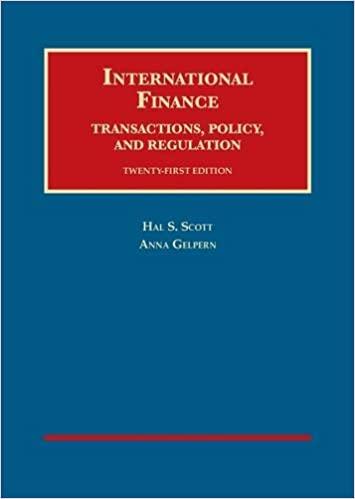Answered step by step
Verified Expert Solution
Question
1 Approved Answer
I would need all the exact answers please . . . Will give Thums u p for sure!! please help!!The DMV The Division of Motor
I would need all the exact answers please Will give Thums for sure!! please help!!The DMV
The Division of Motor Vehicles DMV is part of the State Department of Transportation DOT The purpose of that department is to ensure the safety and free flow of people and goods throughout the State by ensuring that there is a reliable system of transportation and motor vehicle services. This mission is accomplished by funding the maintenance of the existing transportation infrastructure, by adding to and improving the infrastructure, and by otherwise operating a transportation system that minimizes congestion and promotes safety and the economic growth of the State.
Among the key functions served by the DOT are:
driver licensing and insurance
vehicle inspection
bridge and highway construction and maintenance
public transit
The current year budget for the DOT is $ million. Of that amount, $ million is budgeted to be spent on the DMV which has the following objectives:
to provide customerfriendly, efficient motor vehicle services;
to regulate drivers and motor vehicles to deter unlawful acts and protect the public safety;
to further protect public safety by identifying vehicle safety problems; and
to further protect the public by ensuring that all drivers carry insurance.
The State is currently preparing its budget for the coming fiscal year, which runs from September through August As the director of the DMV you are responsible for three major areas:
licensing, registration, and inspection of motor vehicles;
driver licensing; and
compulsory insurance.
A major issue for the coming year will be the overhaul of the drivers license program to include the latest enhanced digitized security technology. To cover this increased cost, the DMV is planning to charge $ more for new drivers licenses and license renewals. This charge is not enough to fully cover the cost of the new licenses, but raising fees was a political hot potato during the last session of the state assembly, and the Governor would be reluctant to propose any further increase to that fee.
Another major initiative being planned for the DMV for the coming year is a centralized computer system to verify that all registered vehicles are insured. Once the system is in place, the DMV will be able to check insurance coverage not only when a vehicle is registered, but also when law enforcement officers stop a vehicle, when the vehicle has its biannual safety inspection, and at other times. The system will require an initial capital investment of $ million and operating costs of $ per inquiry. It is expected that there will be million uses of the system spread evenly during the coming year. None of the capital investment cost appears as part of the operating budget for the coming year.
To comply with the States Clean Air Act, the auto inspection program must be modified. The DMV has estimated that it will cost $ million to equip the state vehicle testing centers with the necessary equipment for the new, stricter test. None of this cost will be part of the operating budget for the DMV
The DMV also expects to issue more licenses per month early in the year, as drivers try to avoid the extra cost and documentation requirements associated with the new higher security licenses. It expects to issue licenses using the old technology, spread evenly throughout the first four months of the year, and licenses using the new digitized technology, spread evenly throughout the last eight months of the year.
There are expected to be vision tests, written driving tests, and road tests in total for the year. These tests are expected to occur in the same proportion as the number of licenses issued each month. It is expected that there will be vehicle registrations and annual vehicle inspections, and these will occur evenly throughout the year. Note that the vehicle inspection number includes reinspections for vehicles that fail their initial inspection.
The sources of revenue for the DMV are as follows:
auto license fees: $ for the oldstyle license and $ for the new improved digitized license with all security features;
vehicle registration fees: $ per vehicle registered, on average;
vehicle inspection fees: $ for failing the inspectionotherwise no fee. It is expected that percent of the total number of vehicle registrations will result in inspection failures and reinspections;
state appropriationfor any balance not funded by fees; and
transportation trust fundfor capital acquisitions.
The costs of running your department consist of personnel expenses, materials and supplies, and a variety of purchased services. Personnel costs have a fixed administrative component of $ million per year that is not affected by the DMVs service volume. Administrators are paid evenly throughout the year. Other personnel costs average $ per transaction, regardless of transaction type, including issuance of an auto
I njjqilwfjjqif
Step by Step Solution
There are 3 Steps involved in it
Step: 1

Get Instant Access to Expert-Tailored Solutions
See step-by-step solutions with expert insights and AI powered tools for academic success
Step: 2

Step: 3

Ace Your Homework with AI
Get the answers you need in no time with our AI-driven, step-by-step assistance
Get Started


